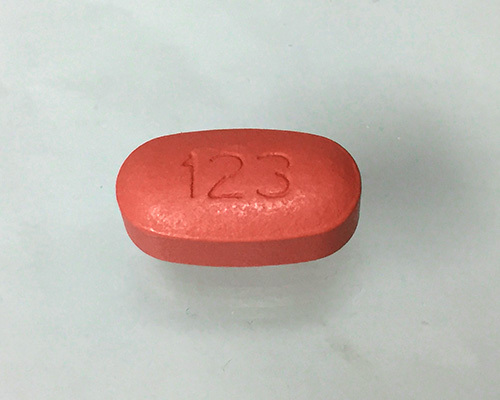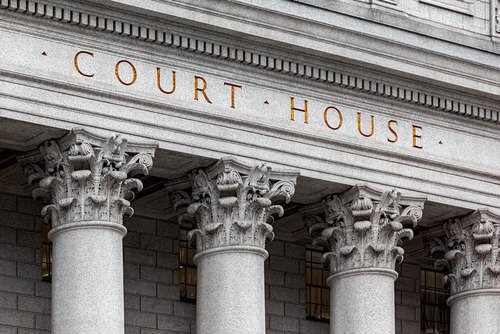Atripla victims are suing drug manufacturer Gilead Sciences for causing them kidney damage and bone loss. Victims may win compensation for medical expenses, lost earnings from being unable to work, and pain and suffering.
What are Atripla’s Side Effects?
Potential serious side effects of Atripla include:
- Chronic kidney disease
- Acute renal failure, requiring hospitalization and/or dialysis
- Fanconi Syndrome/ proximal renal tubule dysfunction,
- Osteoporosis (often resulting in bone fractures)
- Osteopenia (bone density loss/thinning)
- Osteomalacia (bone softening)
- Liver damage
- Skin problems
- Seizures
- Depression
- Lactic acidosis1
Furthermore, this HIV drug has been found to contain metal particles as well as stone-, glass-, and rubber-like fragments.2
Atripla has not been recalled by the FDA despite its toxic effects.
Who makes Atripla?
Atripla is made by Gilead Sciences, a pharmaceutical company and the primary defendant in the Atripla lawsuits. Gilead also makes similar HIV meds:

Brand name HIV medication Atripla is a type of NRTIs (nucleoside reverse transcriptase inhibitor) that helps control HIV infection.
What are the grounds for suing Gilead Sciences?
Atripla plaintiffs claim that:
- Atripla is a defective drug because its active ingredient TDF (tenofovir disoproxil fumarate) causes bone problems and kidney problems (an allegation supported by scientific studies).3
- Drug maker Gilead purposely withheld releasing more effective and safer alternatives containing TAF (tenofovir alafenamide fumarate) in order to fully profit from TDF drugs.
- Gilead was negligent by failing to warn physicians and HIV patients of TDF medications’ risks: Had providers and consumers known of the dangers through an adequate warning label, they might have elected to take a different HIV treatment.4
In short, Gilead placed its wealth over patients’ health.
How much money can Atripla victims get?
Plaintiffs’ attorneys are fighting for as much compensation as possible to cover Atripla victims’:
- Medical bills (including all testing, medications, home healthcare, and long-term rehabilitation)
- Lost wages
- Lost earning capacity
- Pain and suffering
The more severe and permanent the plaintiff’s injuries, the higher the potential settlement.

MDLs are out of federal court so that plaintiffs from all 50 states and D.C. can join.
Is this a class action lawsuit?
No, every plaintiff’s case remains separate. But to speed things along, cases are being temporarily consolidated into a multi-district litigation (MDL) in the Northern District of California (federal court).5
The lawsuits are still in the evidence-gathering (“discovery”) stage. And once all the pretrial issues are resolved, the judge will order a few of the individual cases to go to trial. The first “bellwether trial” is scheduled for June of 2022.
How these bellwether trials turn out will dictate how settlement negotiations will go. If Gilead loses these bellwether trials and is ordered to pay large punitive damages, Gilead will likely make a generous offer to avoid any more trials.
Do I need an attorney?
There are three reasons why Atripla victims should retain private counsel:
- Legitimate personal injury attorneys take no payment unless they win the case. That way, Atripla victims have everything to gain and nothing to lose by hiring private counsel. And since personal injury attorneys operate by contingency fee, they are incentivized to fight for the largest settlement possible as quickly as possible.
- An attorney is often necessary to determine whether Atripla users have a viable legal case. Attorneys can obtain all medical records and consult with medical experts to determine whether a strong link connects a victim’s Atripla usage and injuries.
- Litigation is very complicated, time-consuming, and paperwork-heavy. Attorneys can handle the entire legal process – including gathering evidence and testimony – so victims can concentrate on healing and getting back to their lives.
There is a statute of limitations to file Atripla claims, so victims should consult an attorney right away.
Legal References
- Iwen F Grigsby, Lan Pham, Louis M Mansky, Raj Gopalakrishnan, and Kim C Mansky, “Tenofovir-associated bone density loss,” Therapeutics and Clinical Risk Management 6:41-7 (2010); Willem D.F. Venter, June Fabian, and Charles Feldman, “An overview of tenofovir and renal disease for the HIV-treating clinician,” South African Journal of HIV Medicine 19(1):817 (2018); Pablo Rivas, Jorge Polo, Miguel de Górgolas, Manuel L Fernández Guerrero, “Drug points: Fatal lactic acidosis associated with tenofovir,” British Medical Journal 327:711 (2003); FDA Approval Letter for TDF. See Andrew Hill et al., Tenofovir alafenamide versus tenofovir disoproxil fumarate: is there a true difference in efficacy and safety? Journal of Virus Eradication, Volume 4, Issue 2, April 2018, Pages 72-79.
- Sydney Lupkin, When Medicine Makes Patients Sicker, Kaiser Health News (January 4, 2019).
- See Sample Jury Instructions CACI No. 1222. Negligence—Manufacturer or Supplier—Duty to Warn—Essential Factual Elements. See Berrier v. Simplicity Mfg., Inc., 563 F.3d 38, 61 (3d Cir. 2009).
- Melody Petersen, “FDA’s second warning letter to Gilead, Los Angeles Times,” (May 29. 2016); See Melody Petersen, “Patients sue Gilead, saying drug company intentionally delayed safer HIV medicine,” Los Angeles Times (May 9, 2018). Note that Atripla is an antiretroviral drug, and it is a three-drug combination of 1) efavirenz (EFV), 2) emtricitabine (FTC) and 3) tenofovir disoproxil fumarate (TDF). See our related article, When could Gilead have released TAF?
- The Truvada MDL is called In Re. Tenofovir Disoproxil Fumarate Products Liability Litigation, MDL 2881Some TDF victims have filed a class action against Gilead: Martinez v. Gilead Sciences, Inc., No. BC 705063 (Cal. filed May 8, 2018).
